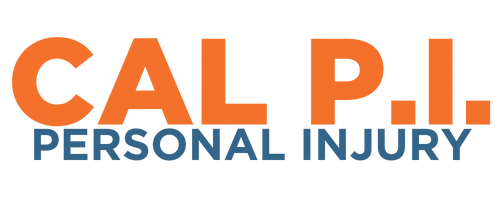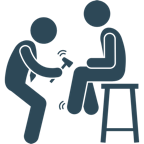

If you're going to be working with patients in the personal injury arena, you're going to want to know the components of a car insurance policy. Here is a brief rundown of the different parts of a car insurance policy:
Interpreting your car insurance coverage can be complex, as policies can vary widely depending on the provider and the specific package you have purchased. However, there are several key components of car insurance coverage that you should be aware of when interpreting your policy:
It's important that patients take the time to carefully review their policy and understand what is and is not covered. They should feel free to reach out to their insurance agent if they have any questions or need clarification on certain terms.
Yes, a patient may be able to use their automobile liability coverage to pay for treatment from a chiropractor after an accident. Automobile liability coverage, also known as car insurance, typically includes medical payments coverage (MedPay) or personal injury protection (PIP) that can be used to pay for medical expenses related to an accident, such as treatment from a chiropractor.
In some states, MedPay or PIP is mandatory and automatically included in car insurance policies, while in others it is optional. It is worth noting that each state has different laws and regulations on this matter.
When a patient comes into a chiropractor's office following an accident, they should inform the chiropractor that the treatment is related to the accident and provide information about their automobile insurance policy. The chiropractor can then work with the patient's insurance company to submit claims for payment and to ensure that the patient's benefits are being properly used.
It's also important to note that MedPay or PIP coverage is separate from liability coverage in the car insurance policy, which is the coverage that protects the policy holder if they are found to be at fault in an accident. MedPay and PIP coverage are for the injuries of the policy holder and the passengers of their car regardless of the fault, covering medical expenses.
It's always best for the patient to check with their car insurance provider, and provide the chiropractor with necessary information to proceed with the billing.
No, collision coverage is typically not used to pay for chiropractic care. Collision coverage is a type of car insurance that pays for repairs to your vehicle in the event that you are involved in an accident, regardless of who is at fault. It doesn't cover medical expenses for injuries sustained during the accident.
Medical expenses are covered by MedPay or Personal Injury Protection (PIP) coverage, which is typically included in car insurance policies. MedPay and PIP coverage are designed to cover the medical expenses of the policyholder and passengers in the event of an accident.
It's important for patients to understand the difference between collision coverage and medical payments coverage or personal injury protection in order to know what their policy covers and what they are able to claim. Patients should check with their car insurance provider to confirm what type of coverage they have, and provide the chiropractor with necessary information to proceed with the billing.
As a reminder, medical expenses after an accident are not always covered by car insurance, and patients may have to rely on other health insurance, disability insurance, or other forms of coverage. It's always best for the patient to check their coverage and provide the chiropractor with necessary information to proceed with the billing.
That is correct. Automobile comprehensive coverage is designed to cover damages to your vehicle that are not caused by a collision, such as theft, vandalism, or weather-related damage. It does not cover medical expenses for injuries sustained during an accident.
Medical expenses are typically covered by MedPay or Personal Injury Protection (PIP) coverage, which is typically included in car insurance policies. MedPay and PIP coverage are designed to cover the medical expenses of the policyholder and passengers in the event of an accident.
MedPay and Personal Injury Protection (PIP) are both types of coverage that are typically included in car insurance policies and are designed to cover medical expenses related to an accident. However, there are some key differences between the two.
MedPay, also known as Medical Payments Coverage, is a type of car insurance coverage that pays for the medical expenses of the policyholder and passengers in the event of an accident, regardless of who is at fault. It typically covers expenses such as hospital stays, doctor visits, and ambulance rides. MedPay is offered as an option in some states but is not in all states.
Personal Injury Protection (PIP), on the other hand, is a type of no-fault coverage that pays for medical expenses and lost wages of the policyholder and passengers, regardless of who is at fault. PIP also covers expenses such as rehabilitation, funeral costs, and lost wages. PIP is mandatory in some states and is not available in others, depending on the state laws.
In summary, MedPay and PIP are both types of coverage that are designed to cover medical expenses related to an accident, but MedPay is mostly focused on the medical expenses incurred after an accident, while PIP also includes lost wages and other expenses.
It is important for patients to understand the difference between the two and know what is covered by their policy and what is not so they can claim accordingly, it's always best to check with your insurance provider for more accurate information, as the coverage can vary depending on the state you reside and the insurance provider.
It is possible for an attorney to use a client's underinsured motorist coverage to recover medical expenses in some cases.
Underinsured motorist coverage (UIM) is a type of car insurance that provides protection if you are involved in an accident with a driver who does not have enough insurance to cover the damages. It can cover costs such as medical expenses, lost wages, and other damages.
When a client is in an accident caused by an underinsured driver and they have UIM coverage, their attorney can work with the insurance company to file a claim for the medical expenses incurred as a result of the accident. The attorney will use any evidence such as police reports, medical bills, and witness statements to support the claim and to argue that the client is entitled to receive reimbursement for their medical expenses under their UIM policy.
It is important to note that the process of using UIM coverage to recover medical expenses can be complex and requires legal expertise. An attorney can help navigate the process and ensure that the client receives the maximum amount of compensation they are entitled to under the policy.
It's also worth noting that the availability and process of using the UIM coverage can vary depending on the state you reside, some states are stricter on this matter, and the attorney should be aware of the laws and regulations in their state in order to use this coverage effectively. It's important for clients to check with their insurance provider for more accurate information on the availability of this coverage and the process of claiming it.



